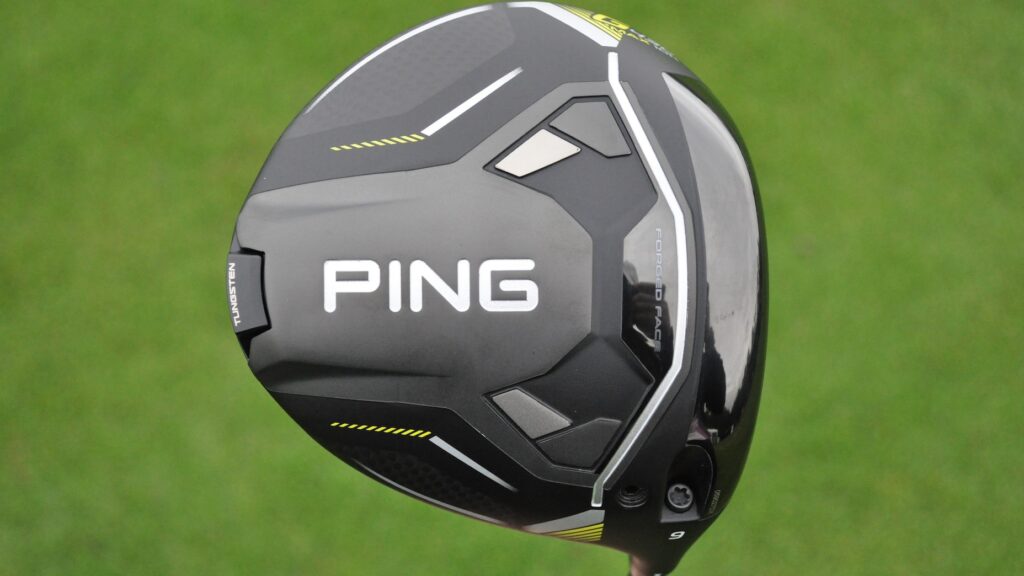For the 2024 edition of GOLF’s ClubTest, we once again teamed up with Golf Laboratories for robotic driver testing. With the help of their swing robot, we’re able to get a better picture of how each driver performs at the same speed (95 mph), delivery and attack angle in a 9-point face mapping test. The end result is an unbiased (and extremely detailed) look at where each driver model excels.
We continue with robotic insights on Ping’s all-new G430 Max 10K driver. Pick up all your Ping gear at Fairway Jockey.
MORE FROM OUR 2024 CLUBTEST COVERAGE: Ping’s G430 Max 10K driver: 4 things you need to know | Ping’s Blueprint T and S forged irons: 4 things you need to know | Ping S159 wedges for 2024: Why these are Ping’s most versatile wedges yet | Ping launches 5 new PLD putter designs: Everything you need to know | Ping’s G430 Max 10K driver helped this 12-handicap gain 40 yards
***
Looking in the mirror
Subtle geometry and weight changes are the key differences between Ping’s G430 Max 10K and G430 Max. The obvious question on golfers’ minds — particularly those already playing the Max head — is how different the two models are when it comes to performance.
The robot confirmed that Max 10K and Max possess very similar forgiveness numbers. The 10K saw distance decrease by 8 yards across all three lofts (comparing geometric center strikes to the other 8 mishit locations) versus 8.7 yards with G430 Max.
PING G430 Max 10K Custom Driver
View Product
Looking closer at the numbers, G430 Max 10K earned high marks on toe strikes with a carry distance delta of 2.5 yards. Low center strikes saw a similar drop-off in distance, to the tune of 3.1 yards with the 10.5-degree head.
The tight carry distance deltas give 10K products a slight edge over their Max counterparts, but there’s an even more impressive aspect that needs to be discussed.
Low is good to go
So if the forgiveness numbers between G430 Max 10K and G430 Max are relatively similar, where are the performance improvements? According to the swing robot, it’s low on the face where most mid-to-high handicap golfers live with their impact location.
On a geometric center strike, the 10.5-degree G430 Max 10K produced 12 degrees of launch and 2,700 RPMs of spin. With most of the drivers we tested, moving impact a half-inch lower on the face generally decreases launch and increases spin by anywhere from 200-400 RPMs.
But that wasn’t the case with 10K when the impact location was lowered. Launch decreased to 9.4 degrees, but spin remained constant at 2,700 RPMs.
The goal is to make the launch and spin deltas tighter on mishits so they mimic numbers you’d see on a center strike, which is exactly what the robot saw with Ping’s 10K offering on a common mishit.
It’s important to note the other mishit areas on the face also saw more consistent launch and spin rates during testing, but the lower portion of the face is where this driver shines.
More loft
At 95 mph, more loft can be beneficial in the search for optimal launch and spin characteristics. So it should come as no surprise that the 12-degree Max 10K head produced some of the best numbers we saw from drivers at the same loft.
Distance decreased by a mere 6.6 yards (across the 8 mishit locations), with only the low toe and heel seeing a carry distance delta beyond 5 yards. (Low heel strikes only saw a distance drop-off of 7 yards, for what it’s worth.)
What this means for someone with inconsistent contact is you can essentially hit it almost anywhere on the face and not see a significant dip in performance. There’s a reason why we compared Max 10K to a “tank” during our robotic insight videos. It can withstand anything you throw at it.
Want to overhaul your bag for 2024? Find a fitting location near you at GOLF’s affiliate company True Spec Golf.
